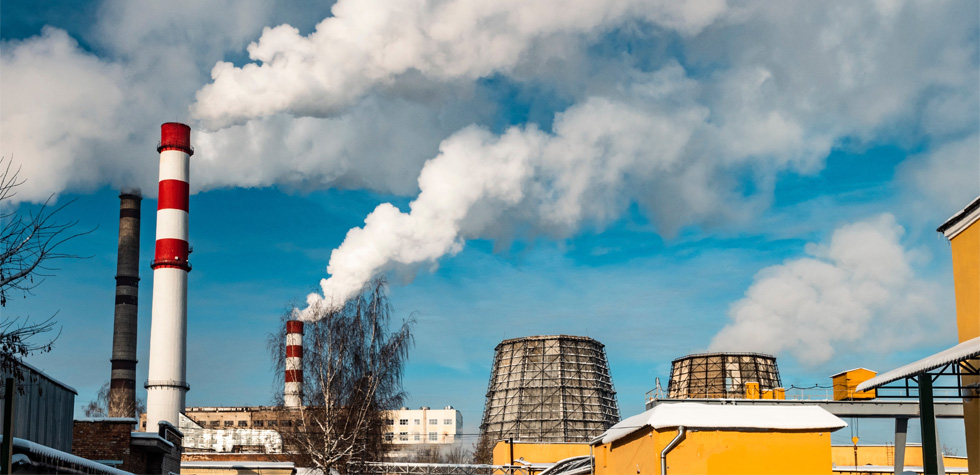Collecting Carbon: Why we need Direct Air Capture
Pressure is mounting to slash carbon emissions faster and further, with scientists urging world leaders to use every tool at their disposal.
Collecting carbon from the sky
Direct air capture (DAC) technologies remove carbon dioxide (CO2) directly from the atmosphere, using a fan to draw in ambient air and pass it through a filter that binds CO2 particles. These particles can then be concentrated, removed, and either permanently stored underground or utilized, for example in food and drink processing.
A vast global effort is required to cut carbon emissions to net-zero by 2050 and limit global warming to 1.5°C, with the IPCC reporting that all possible pathways to limiting warming to 1.5°C should "use [CO2 removal] to some extent to neutralize emissions from sources for which no mitigation measures have been identified”.
Many scientific authorities argue that carbon removal must play a part. Compared to other forms of Carbon Capture and Storage –such as reforestation and bioenergy processes which build in CCS – DAC uses very little land, which adds to its appeal.
The state of DAC
Recent advances in DAC technology are attracting increased public funding and research. The US Investment and Jobs Act, set aside $3.5bn for DAC projects until 2026.
The landmark US Inflation Reduction Act, passed in 2022, includes provisions that could promote significant scaling up of DAC facilities. The act increases the tax credit for permanent carbon removal from $50 to $180 per ton when using DAC and lowers the threshold for the amount of carbon dioxide a facility must remove to qualify for the credit from 100,000 tons to just 1,000 tons.
Despite excitement surrounding DAC, only a negligible amount of CO2 has been removed from the atmosphere using these technologies so far. According to the International Energy Agency (IEA), as of September 2022, only 18 DAC plants were operating, with a total capacity of 0.01MtCO2/year. The world’s largest DAC plant, developed by Carbon Engineering in Texas, aims to begin operations in 2024 with capacity of 1MtCO2/year.

The future of DAC
DAC must reach 60MtCO2/year by 2030 to remain on track for net-zero emissions by 2050. Achieving this will require a significant acceleration in deployment, but recent investment from international giants is revving the engine.
In November 2023 Occidental announced its plan to sell technology licenses for DAC plant building and operation, using multiple partners to balloon its sole capacity of around 100 projects to over 1,000 between now and the end of 2026.
The world’s largest asset manager, BlackRock Inc, is investing $550 million, Abu Dhabi National Oil Company (ADNOC) is funding a preliminary engineering study for UAE’s own 1 million ton-per-year facility. Meanwhile Amazon has committed to buying 250,000 metric tons of DAC in credits over a decade and All Nippon Airways and EasyJet have struck similar agreements.
The investment of iconic global brands indicates a confidence which is set to drive significant scalability in the years to come. These sectors more than doubled in scale between 2010 and 2019 and the IEA predicts they will increase by a further 50% by the end of 2024.
What is the future of DAC?
Capturing atmospheric carbon is more energy intensive than capturing carbon from a fixed-point source, such as a cement factory. At present, its cost can be as high as $600/metric ton. There is broad consensus that for DAC to be feasible at scale, the cost must fall to around $100 per ton.
Although experts caution that this is unrealistic within a ten-year target, there is precedent in the renewables sector. Between 2009 and 2019 the costs of solar energy dropped by 89% and wind energy by 70%, fueling the current exponential curve of investment across the globe.
Innovations on the horizon, such as membrane-based DAC and more energy-efficient methods for regenerating CO2 filters, are already promising to cut costs.
As an emerging technology, there is still work to do around regulation and standardization. DAC must grow alongside other markets, and in tandem with the renewable energy suppliers it will require to operate efficiently.
With global emissions continuing to rise, the need for carbon removal will only grow more urgent.







